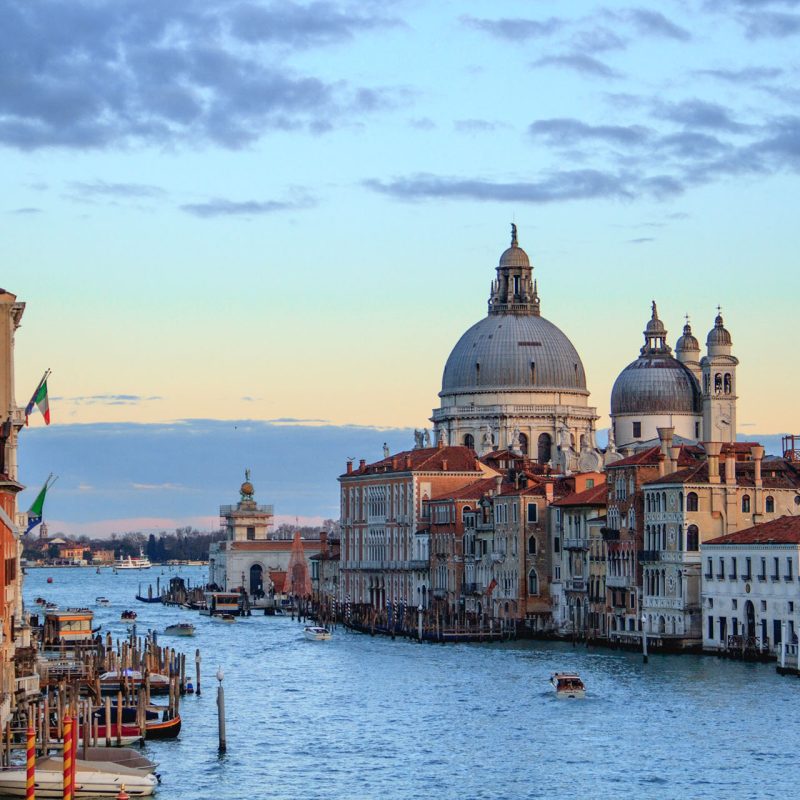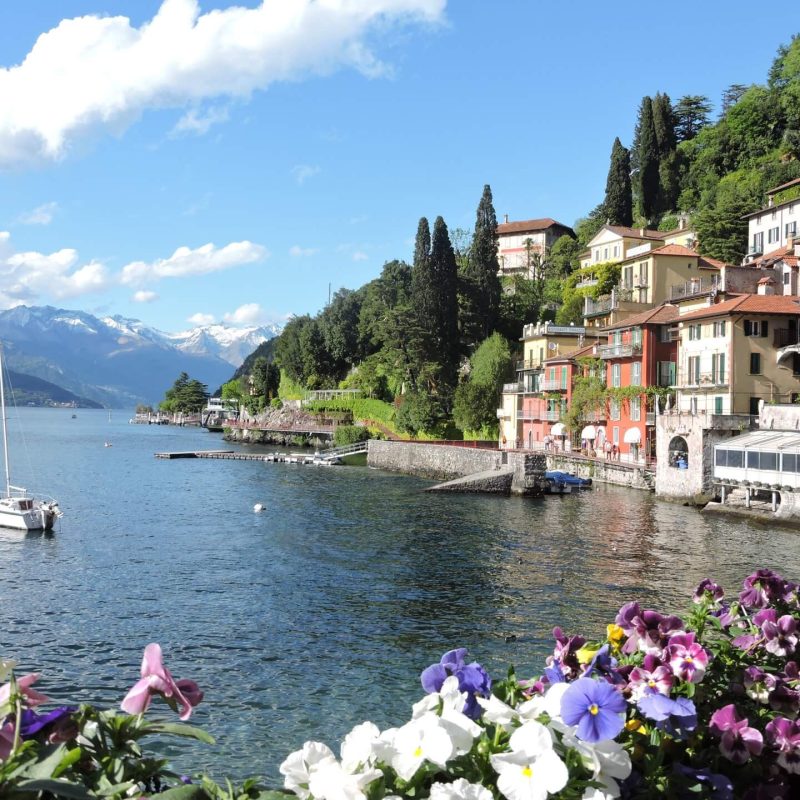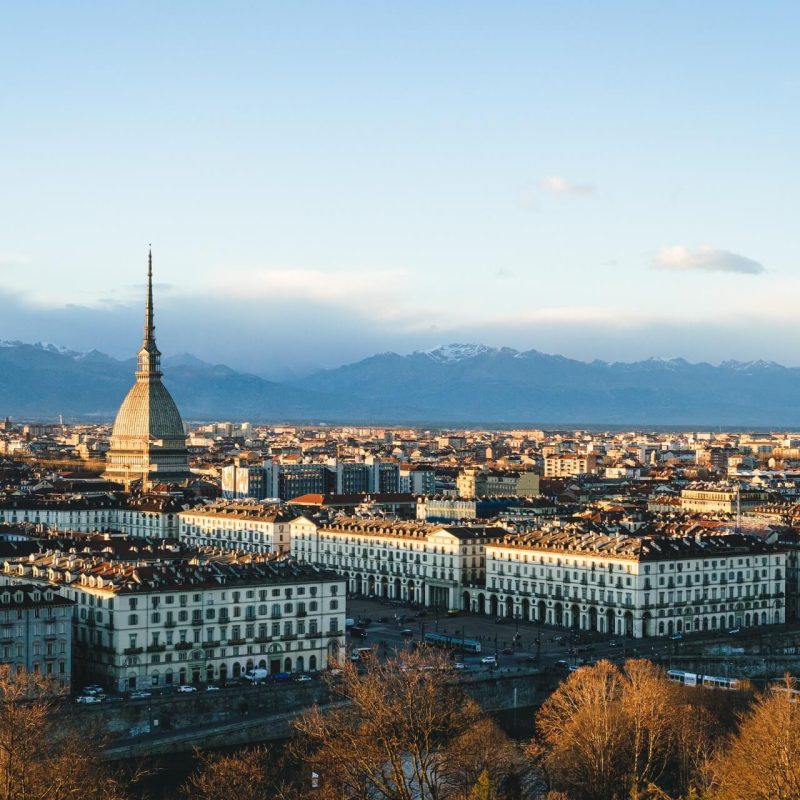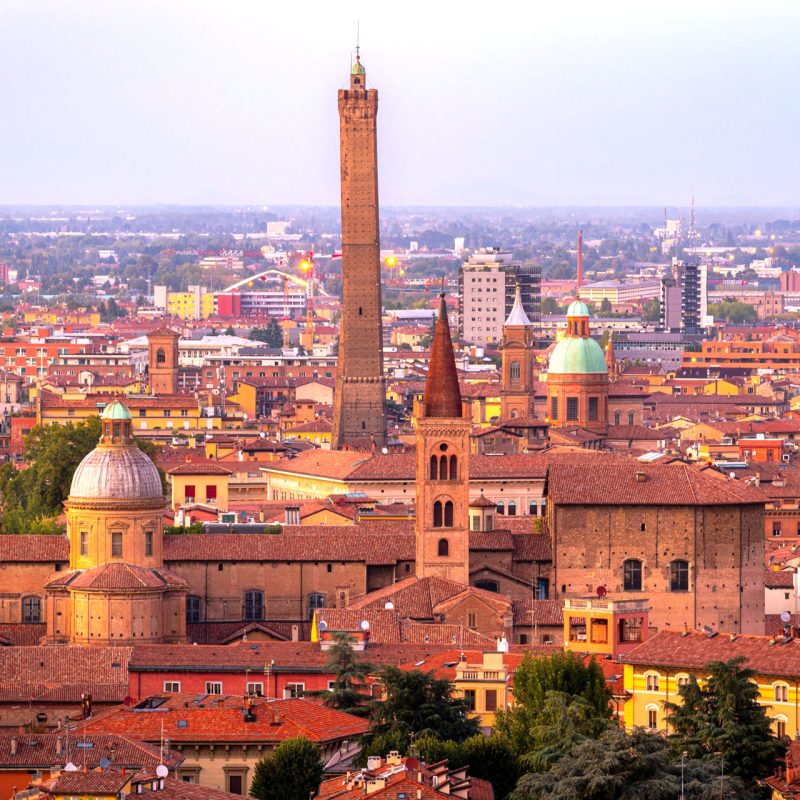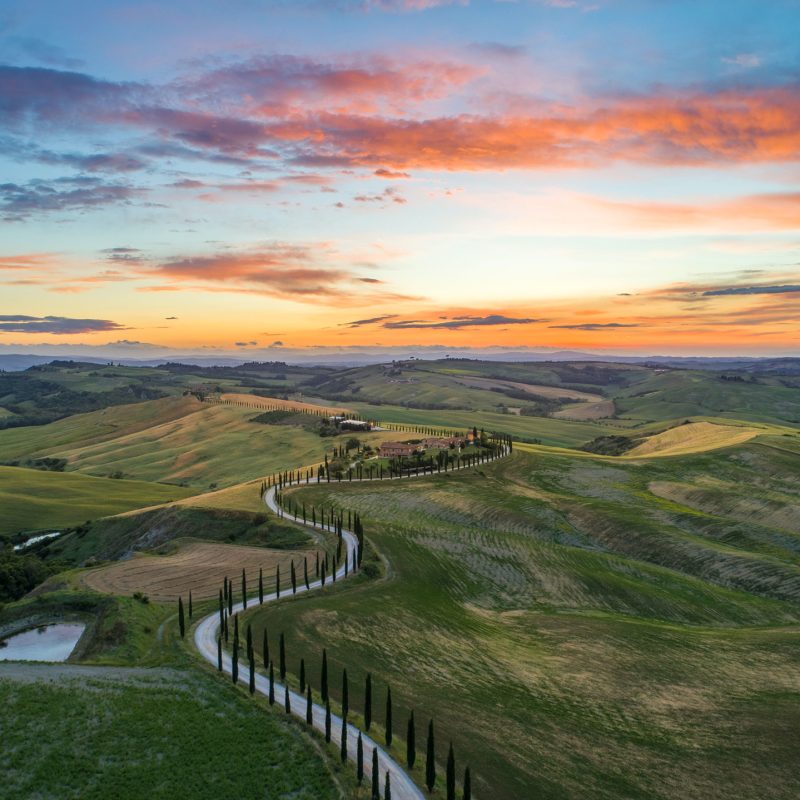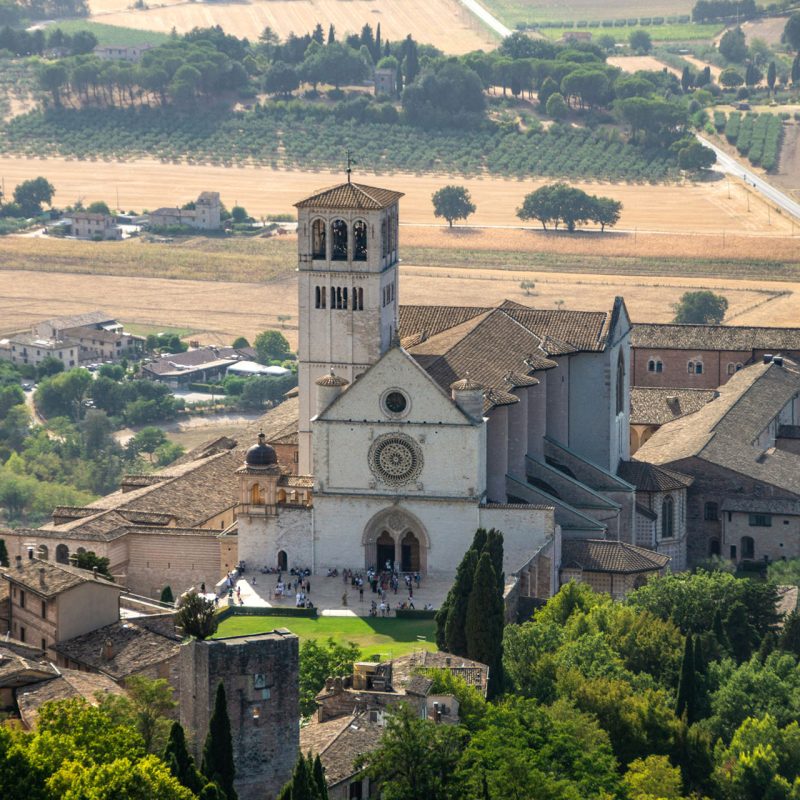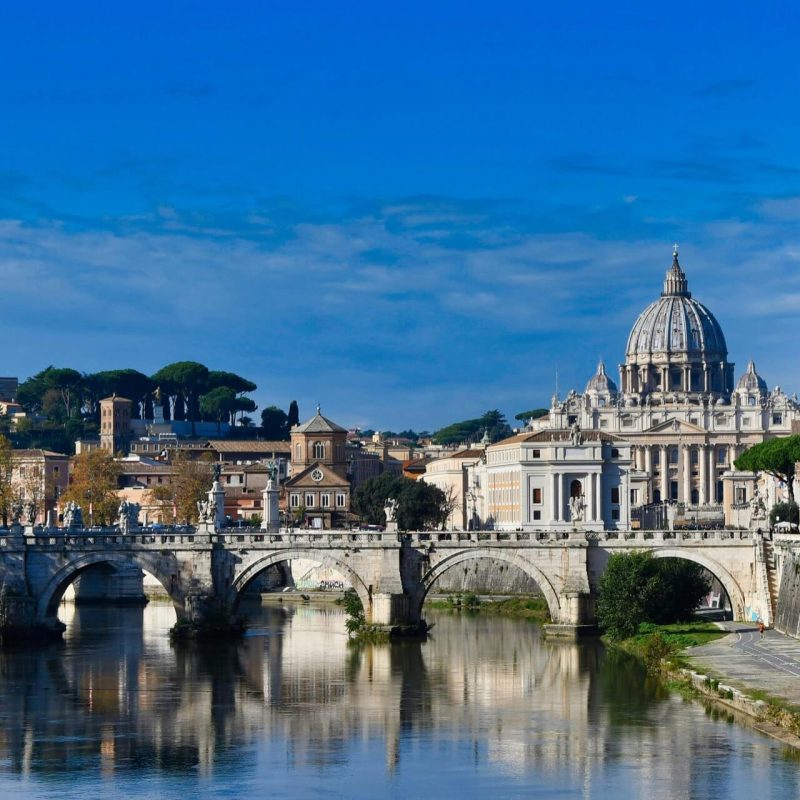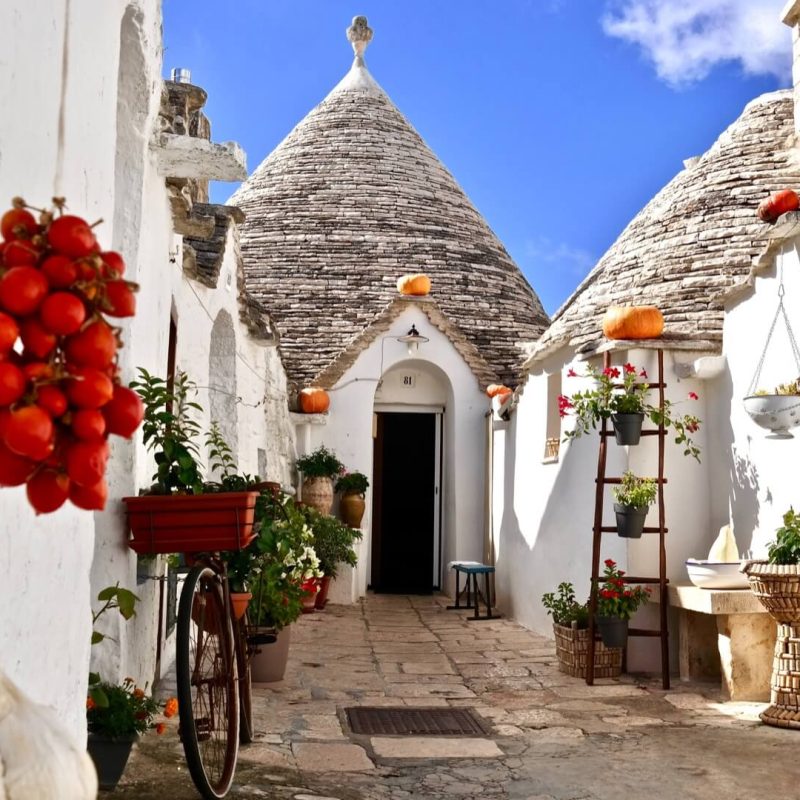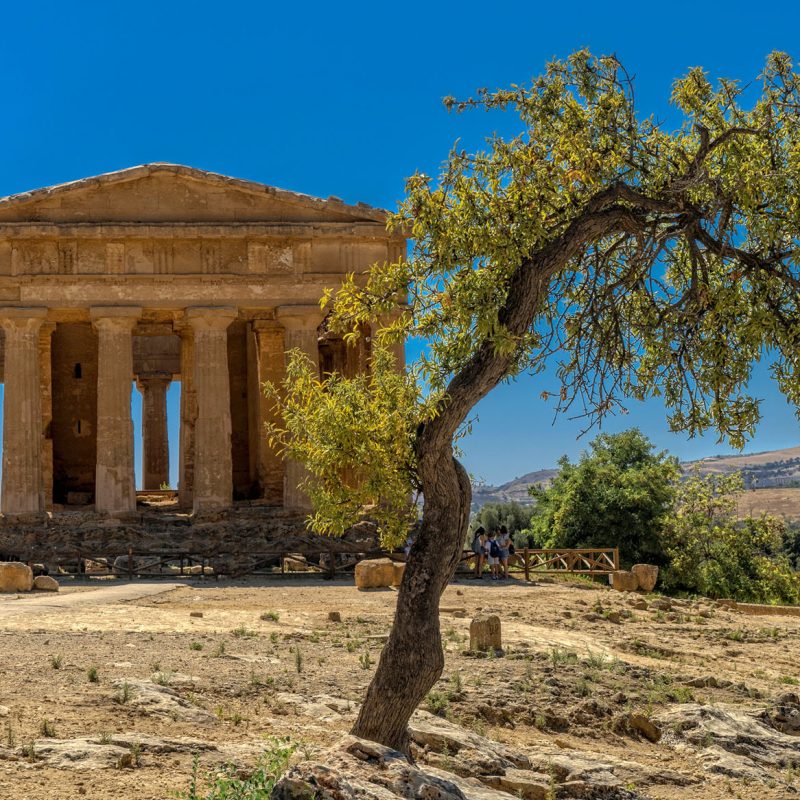Destinations
“Every Italian region I have visited has always left something within me. Sicily, being my region of origin, is like a home with variety that is so vast that it is impossible to contain it in a single word. Apulia has its friendly and familiar welcome. Campania shows its warm affection. Lazio, with Rome at its heart, is so infinite – in space and eras – that there is never enough time to discover it all. Umbria is peacefully silent in its green and relaxing beauty. Tuscany, my first great love, each time I visit feels like the first; I always fall in love with its elegance anew. In Emilia Romagna, I let myself be filled with its flavors and lulled by the music of its great artists (Pavarotti and Verdi, above all). Liguria is the meeting point of blue and green in its sea and the poetic wonder of Portovenere. In Piedmont, I feel the earth’s deepest and highest vibrations: hazelnut groves, chocolate and its red wines that enhance the region’s personality. Lombardy echoes French influences in its capital and harmonizes soft colors in its lakes. Finally, Veneto, where you feel the pride of an entire region in every expression and corner, with Venice translating the mystery of beauty.”
All inclusive: it is the formula for the perfect vacation. Now, if you are wondering which destination in Italy is all inclusive, the answer is Veneto. A region with a thousand stories, a thousand attractions… a thousand good reasons to choose it. And not just for the beauty, irresistible to the eyes, of Venice which is a city unparalleled in the world. The truth is that only in Veneto, within two hours, you can go from a walk on the peaks of the Dolomites (a UNESCO World Heritage Site) and have a bucolic experience on Lake Garda among the Palladian villas in the Vicenza area. You can have a swim in the sea in Jesolo, Bibione, and Caorle. And, if you want to take it easy, take a break with a glass of wine or a Spritz, before reaching the point where the Po River merges with the Adriatic Sea. All inclusive: just choose where you want to start getting to know Veneto. Everywhere, the genuineness of the territory, with its proud people, can offer a thousand and one itineraries, to be walked with your feet firmly planted in wonder.
Lombardy represents fashion offerings, business vibrancy, attention to style and the centrality of work and culture. If there’s a region that has profoundly influenced the development of modern Italy, it’s Lombardy, the industrial and financial engine of the Boot. Especially important is Milan, a diligent and ever-moving heart, which is home to the Stock Exchange, major corporations, and priceless artistic masterpieces. However, Lombardy is much more than that: it’s a region rich in “hidden” gems waiting to be discovered. Those eager to marvel at its culturally and artistically valuable heritage can visit the cities of Mantua and Pavia and enjoy the beauty of historic centers like Cremona and Upper Bergamo. Nature offers lush green valleys (especially Valcamonica and Valtellina), rivers, and lakes (Como, Garda, Iseo) that attract celebrities and tourists from all over the world, plus a countryside rich in culinary excellence (like Oltrepò and Franciacorta). DS Journeys is proud to guide you through Lombardy, a land of a thousand surprises with a long and rich history and villages and landscapes capable of enchanting.
Welcome to the “Feet of the Mountains” (the Alps), that is, to Piedmont! Piedmont is a region with variegated nuances and a strong naturalistic, historical, culinary, oenological, cultural, and industrial personality. From the majestic royal residences of the House of Savoy to the elegant lounge squares of Turin, from the Borromean Islands embroidered with gardens to the gentle hills of the Langhe interwoven with vineyards – every corner here offers something wonderful that will leave you amazed. Piedmont played a key role in the Europe of past centuries, and preserves the roots of ancient peasant life, where artisanal traditions have merged with industrial entrepreneurship, history has embraced innovation, and the food and wine tradition has become a fascinating narrative of the territory and its people.
Liguria is the alleys, the ancient port, and the palaces of Genoa. It is an ancient and glorious Maritime Republic. It is also the enchanting villages of the Cinque Terre, a globally renowned tourist destination and the Gulf of Poets. It is the island of Palmaria, a UNESCO heritage site, where a stay equates to a breath of fresh air for the soul. Then there is Sanremo, the Riviera of the Fiori and the Riviera of the Palme. Whether glimpsed from a typical Ligurian boat or strolling along its paths, Liguria is a strip of land between the Alps and the Tyrrhenian Sea. In it, the combination of mountain, sea, and human ingenuity creates a particularly diverse range of ecosystems. The villages are nestled like gems in the mountain crown, and they descend towards the sea through steep winding streets making it one of the most charming regions in Italy: a concentration of beauty, with traditional flavors and romantic postcard-worthy views.
It could be due to its coasts, or to the contagious joy of its people, tough and proud, who always see the positive side of things. It might also be because of its 110 km of well-equipped beaches, suitable for any kind of activity. Or it might be for its adventure parks, nature reserves, castles, manors, fortresses, and spas as well as traces of the most important civilizations from the Romans to the great Duchies of the 19th century. It could also be for that passion for engines that offers a pleasant feeling of freedom. It might be for the abundance, in quality and quantity, of products, dishes, and typical flavors with which they honor the table here every day, strictly in good company. It might be for its cities (Bologna, Ferrara, Parma, Reggio, Modena in Emilia; Rimini, Cesena, and Ravenna in Romagna) that fill you with timeless artistic beauties. In Emilia Romagna your journey in search of happiness is an anthem to the good Italian lifestyle.
One crucial aspect to consider before embarking on our journey to Tuscany is that we are not just discussing a geographical destination. Rather, we are delving into a place of the soul that, through art and culture, has managed to leave an indelible mark of beauty in the collective imagination. Tuscany, with its gentle landscapes, gained significance in Medieval Europe. It possessed aesthetic and cultural dominance during the Renaissance thanks to the de’ Medici family and Lorenzo the Magnificent. It is now a captivating destination that enthralls travelers from around the world. This allure is further enhanced by its strong territorial, eno-gastronomic, and linguistic identity, refined over the centuries. There were centuries of struggles, and civil strife dualism symbolized by the conflict between the Guelphs and Ghibelline. There was also an inexhaustible literary, artistic, and architectural creativity: Florence, Siena, Pisa, Arezzo, Lucca – and their surroundings – are open-air museums. There one can easily sense the beating heart of Italian taste, style, and elegance.
We can call it the “green lung of Italy,” but also the “belly button of the Il Bel Paese (the Beautiful Country)” for its position in the heart of the Peninsula. Umbria is a region that keeps its treasures “in the shade.” Its towns are rich in art and history, artisan workshops preserve ancient traditions, and companies excel in products like olive oil, truffles, and wine. Even though the region is not bathed by the sea, it is the ideal place for sports or for discovering relaxation and contemplation, such as in front of the majesty of Lake Trasimeno. One can stroll through the timeless alleyways of Narni, Norcia, and Spello. One can immerse oneself in nature in the Valnerina at the foot of the Marmore Waterfall. Or experience art in Spoleto, Assisi, Todi, and Perugia. In short, even without the sea, Umbria still manages to refresh the spirit.
“All roads lead to Rome.” It was true yesterday, and it is today. In part because the ‘eternal city’- in the sense that it has always existed – is the first metropolis that the West has known. It is a fertile mix of peoples, cultures, and religions. It is home to emperors, popes, and kings who have artistically shaped it into a wonder in the eyes of the world. It is a veritable treasure trove that contains more than two millennia of history, proudly displayed before the astonished eyes of those strolling through its streets. In part because one departs from and arrives in Rome by crossing Lazio, the region that contains it has strengthened its roots thanks to the populations that Rome later conquered and absorbed (the Latins, the Sabines, the Volsci, the Etruscans). Precious testimonies of these peoples remain, all waiting to be discovered. Equally pleasing is the discovery of the regional culinary proposal: ancient, popular, and simple.
For everyone, there is a place that, just by thinking about it, brings happiness. Well, for us, that place is Campania, the region of treasures: Naples and Sorrento, Capri and its Faraglioni, the scent of lemons on the Amalfi Coast. Add to that, the historical charms of Pompeii and Herculaneum, buried by the volcano Vesuvius in 79 BC, of Paestum, and of the majestic Royal Palace of Caserta. It is the region where pizza was born – the most loved and consumed dish in the world – using the symbolic products of the region: wheat, olive oil, tomatoes, and mozzarella. The region that was already felix for the Romans, meaning happy and fortunate: a mild climate, a fertile land of exquisite agricultural products, developed trade thanks to the Tyrrhenian Sea, culture, and limitless genius. It is the region that completed the Grand Tour of young European aristocrats in search of beauty, harmony, and wonder. In short, the region that, just thinking about it, makes you want to hum a tune. DS Journeys welcomes you to Campania: a chorus of wonders that will resonate in your memory forever.
How many wonders can you encounter along over 930 km of coastline? Can’t say? It’s because you haven’t been to Apulia. Or maybe better to say ‘the Apulias’, because this region, due to its location, has always been seen as a bridge between two worlds: the Western (Latin and Germanic) and the Eastern, which was first Greek and then Byzantine. With multiple cultures, different styles, and ancient civilizations, Apulia reached its peak glory thanks to Frederick II of Hohenstaufen, also the King of Sicily, known as Puer Apuliae, the boy from the South. From Gargano to Salento, the pieces of the wonder puzzle include untouched nature, blue sea, and vast plains. The region was once called Tavoliere by the Romans. The name derived from the land registry table on which they recorded lands and properties. Here olive groves intermingle with vineyards, ancient villages, trulli, and prehistoric graffiti. Farms to taste local delights, face to face with local farming families, are countless. It’s up to you, pampered by warm yet discreet hospitality, to put them together and create a travel experience that will be impossible to forget.
The Arabesque domes and squares of Palermo are to the West, while the late Baroque palaces and churches of the Val di Noto lie in the Southeast. The Valley of the Temples in Agrigento is to the South. The pyrotechnic eruptions of Mount Etna are just a few kilometers from the chic allure of Taormina to the Northeast. Surrounding the largest island in the Mediterranean, sits a generous, crystalline sea with tropical colors. With its iconic triangular shape, 1500 kilometers of coastline, the irresistible delicacies of its culinary tradition, and the power of its lush nature, Sicily – land of myths – is a triangle of Paradise. It will make you fall in love at first sight.
